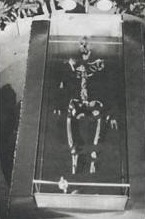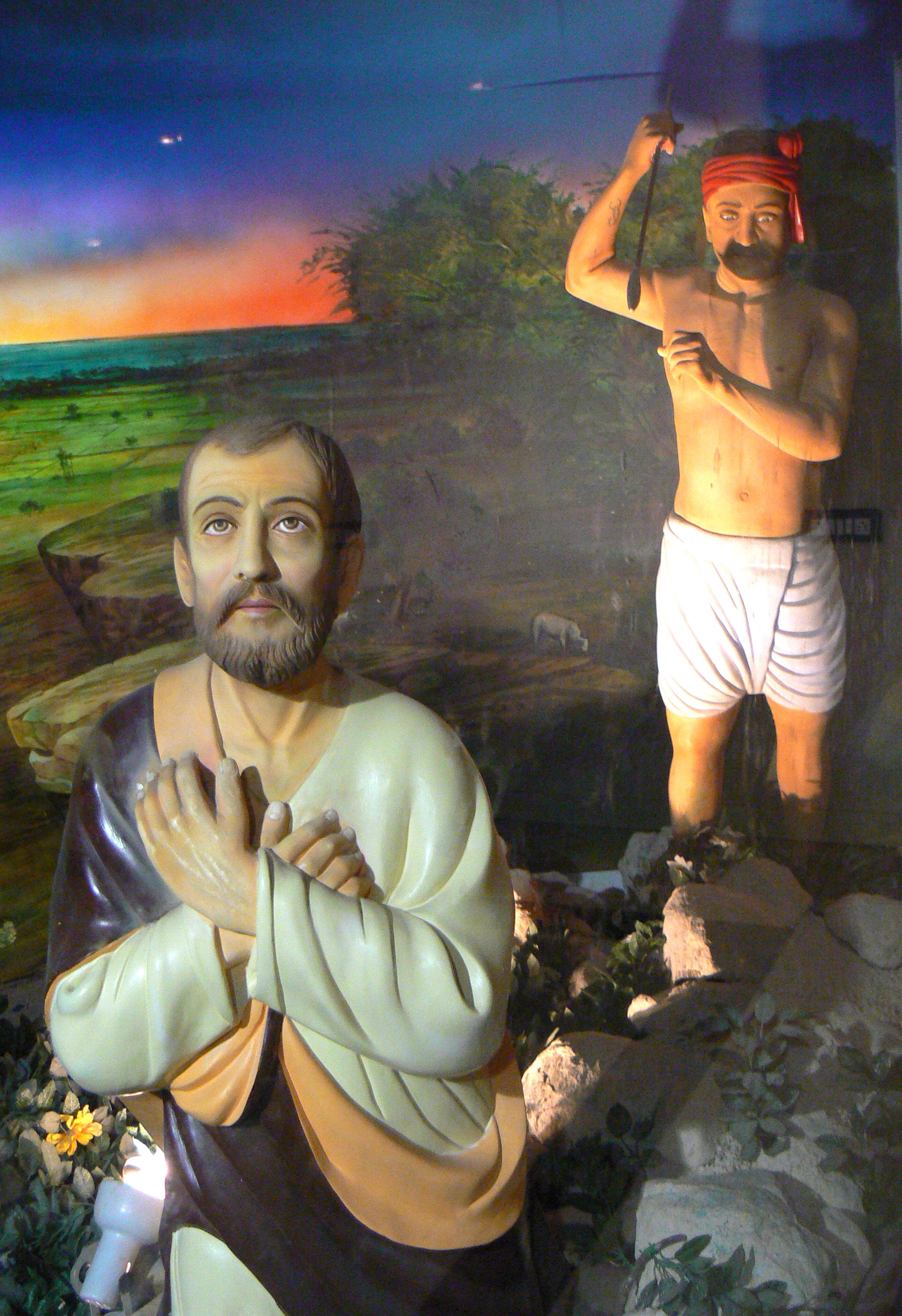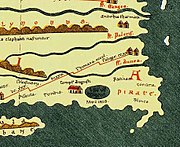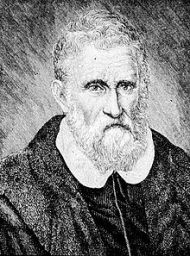“Dr. K. Sadasivan in the Journal of Indian History and Culture follows in Archbishop Arulappa’s footsteps with his unsubstantiated claim for a Christian Tirukkural and a St. Thomas in India sojourn. He and his editors lack integrity or basic scholarship and have become a laughing stock among serious scholars worldwide.” – Veda Prakash, author of Indiavil Saint Thomas Katukkathai
The following observations refer to the article “Early Tamil Oral, Literary and Archaeological Traditions and St. Thomas Christians” by Dr. K. Sadasivan, Professor and Head of the Department of History, Manonmaniam Sundaranar University, Tirunelveli, Tamil Nadu, which appeared in the Journal of Indian History and Culture, March 2003,10th issue.
The Journal of Indian History and Culture is published by C.P. Ramaswami Aiyer Institute of Indological Research, C.P. Ramaswami Aiyar Foundation, 1, Eldams Road, Chennai – 600018, Tamil Nadu, India. Email: cpraf@vsnl.com.
The Journal of Indian History and Culture is edited by Dr. G.J. Sudhakar. The editorial board consists of Dr. R. Nagaswamy, Dr. T.K. Venkatasubramanian, Dr. K.V. Raman, and Dr. Nandita Krishna.[1]
In his article of some twenty pages in the JIHC (March 2003, pp. 17-38), Dr. Sadasivan spewed forth the usual Christian missionary propaganda about St. Thomas in India. He appears to be guided by the unholy spirit of the late Archbishop Arulappa. He writes:
“It can be understood from the foregoing study that even in the absence of any documented history, the universal and local Christian traditions are unanimous in their views that St. Thomas arrived in India in 52 A.D., reached Mylapore via the West Coast (Thirivithancode-Aralvaimozhi Pass), performed there his apostolic service in converting the natives to his religious fold and suffered martyrdom there at the hands of a native in A.D., though there are differing versions about his killer(s) and the place of his martyrdom. Moreover, the presence of a strong St. Thomas community, the tomb, the chapel, and the cross, and the architectural remains, make us believe that St. Thomas was living among Tamils of First Century A.D. However, it is premature to postulate a theory of Christian influence in Tamil works, particularly, Tirukkural, though it seems to display the possibility of having been influenced by the Bible Christ’s Sermon on the Mount. But, a spark Christian influence on the Tirukkural is not impossible as this didactic work is believed to have been written in the Second Century A.D., when St. Thomas Christians in the West Coast were still entrenched and began spreading the Gospel of Christ.” (JIHC, pp. 33-34)
In this extraordinary piece of duplicitous writing, Dr. Sadasivan states openly that there is no documented history of St. Thomas in India and that it is a matter of belief; yet, he has the conceit to present it as history. Obviously, he has not read what Dr. Nagaswamy has written about “the doubtful Thomas”.
Furthermore, none of Dr. Sadasivan’s “architectural remains” stand up to scrutiny. His claim that there is a universal and unanimous view among Christians that St. Thomas arrived in India in 52 A.D. is an outright lie. There is no universal and unanimous view among Christians about St. Thomas in India. In fact, Protestant Christians regard the whole St. Thomas legend as a Catholic superstition brought to India by the Portuguese.
Next, Christians did not use the cross to represent Christianity until after the 4th Century (see Koenraad Elst, The Return of the Swastika, New Delhi, 2007). So the “bleeding” cross on Big Mount cannot be attributed to St. Thomas. It has been correctly identified as Persian and dated to the 8th Century.
There is also the problem of the Bible and the “Sermon on the Mount” found in the New Testament. There was no Bible as such until after the Council of Nicea in 325 A.D., so neither St. Thomas nor Tiruvalluvar (assuming that he had lived in A.D.) could have possessed one, and the “Sermon on the Mount” is known by historians to be a late interpolation into the New Testament. It is believed to have had a pagan author, which is why it expresses universal values and appeals to non-Christians. It could not have influenced the writing of the Tirukkural. And this, of course, brings us to the prime deceit in Dr. Sadasivan’s thesis: he would like us to accept that the Tirukkural was written in the 2nd Century A.D. and not the 2nd Century B.C. But it is widely accepted by historians that the Tirukkural was written between 100 and 200 B.C., with 200 B.C. as the preferred date. So what is Dr. Sadasivan’s agenda? And why has he tried the old trick of giving a late date to the Tirukkural in order to claim a Christian influence on it?
“But, a spark of Christian influence on the Tirukkural is not impossible as this didactic work is believed to have been written in the second century A.D., when St. Thomas Christians in the West Coast were still entrenched and began spreading the Gospel of Christ.” Had Archbishop Arulappa[3] been alive, he would have generously funded Dr. Sadasivan’s “research” in Tirunelveli, as he did that of Acharya Paul[4] in Srirangam. How is it that Dr. Sadasivan uses the same bogus research methodology as Archbishop Arulappa and Co?
Dr. Sadasivan is an intellectual criminal and a disgrace to Indian history writing, but his editor Dr. G. J. Sudhakar at the Journal of Indian History and Culture has not covered himself with glory either. He writes “Dr. K. Sadasivan, of Manonmaniam Sundaranar University has added scholarship through his paper “Early Tamil Oral, Literary and Archaeological Traditions and St. Thomas Christians”. He has been a history professor at Loyola College, editor of several history journals, office bearer of IHC, SIHC, TNHC, etc.”
Dr. Sadasivan has not produced any scholarship in this paper and Dr. Sudhakar is sucking up to some very ordinary academic positions and titles with his praise of Dr. Sadasivan’s motivated contribution to the St. Thomas in India controversy. He should be ashamed. Under his editorial guidance the Journal of Indian History and Culture has lost all credibility among research scholars and academics.
› Veda Prakash is the author of Indiavil Saint Thomas Katukkathai (in Tamil).





























Dr. Sadashivam became mad because he tried to hide the real history and facts about the Indian History. If he wants to do so better he must read the History of India and the history of world clearly and carefully. Otherwise he has to keep quite or else to quit history writing.
The Pahlavi (Persian) inscription on the three stone crosses, two in Kerala and one on St. Thomas Mount, read (according to C.P.T. Winckworth whose translation is generally accepted): “My Lord Christ, have mercy upon Afras, son of Chaharbukht the Syrian, who cut this.”
Afras the son of Chaharbukt must have come from Fars in Persia where there was a recognized church, the Church of Fars, founded by Thomas.
Either the Portuguese brought the Big Mount stone cross from Kerala where it had been cut in earlier centuries, or they brought a Syrian Christian artisan to Madras to cut it.
Whatever they did, they obviously did not understand the inscription which clearly attributes the carving to the Syrian Afras and not/not the apostle Judas Thomas.
Even if we suppose Judas Thomas visited Mylapore, he could not possibly have carved a cross as he was a practicing Jew who abhorred the the cross as a symbol of torture and Roman domination in his homeland Israel. All early Christians abhorred it. The Church of Jerusalem to which Thomas belonged was made up of practicing Jews who followed Jewish religious codes and hated all things Roman (this would change later after Paul got the upper hand and abandoned Jewish religious customs in order to gain Gentile converts in Greece and Rome).
Not surprising to learn that Dinamalar is in Archbishop Chinnappa’s pocket. Most mainstream Indian newspapers are either owned by Christian front companies or their “secular” editors have Christian sympathies. Telling the truth has never been a priority for the Indian media.
See http://en.wikipedia.org/wiki/Dinamalar for some background on Dinamalar
Recently, Dinamalar has started spreading the same myth under different a guise, obviously with the connivance of the Church.
Evidently, the Church has understood the folly of spreading the Thomas myth, as it brings negative effect day by day.
Therefore, they have changed the strategy and are bringing Mary before Indians, so that as a “Goddess”, she may be accepable to everybody.
Thus, this newly floated myth is introduced through Dinamalar: “Mary, when she ascended to heaven, dropped her virgin girdle to be picked up only by the doubting and doubtful thomas and thomas was wearing that girdle! Thus, his remains were taken to Edessa, this girdle also gone there to be entombed!
“Such Mary’s ascending heaven and dropping girdle to be picked up only by the doubting and doubtful Thomas, is depicted in a painting and that painting is in the Santhome Church!” San Thome is constructed on the site of KapaleesWarar Temple.
See: http://thomasmyth.wordpress.com/2009/12/25/%E0%AE%A4%E0%AE%BF%E0%AE%A9%E0%AE%AE%E0%AE%B2%E0%AE%B0%E0%AF%8D-%E0%AE%AA%E0%AE%B0%E0%AE%AA%E0%AF%8D%E0%AE%AA%E0%AF%81%E0%AE%AE%E0%AF%8D-%E0%AE%A4%E0%AE%BE%E0%AE%AE%E0%AE%B8%E0%AF%8D-%E0%AE%95/
I sent my response to Sri R. Krishnamurthy, editor of Dinamalar, but he has not replied so far.
Last time when I sent High Court papers, etc., to prove the fraudulent activities of the Christians, he returned them by courier, retaining my covering letter!